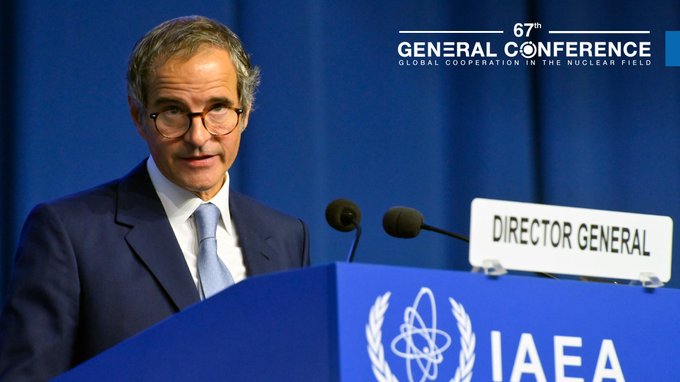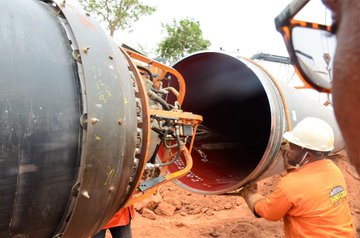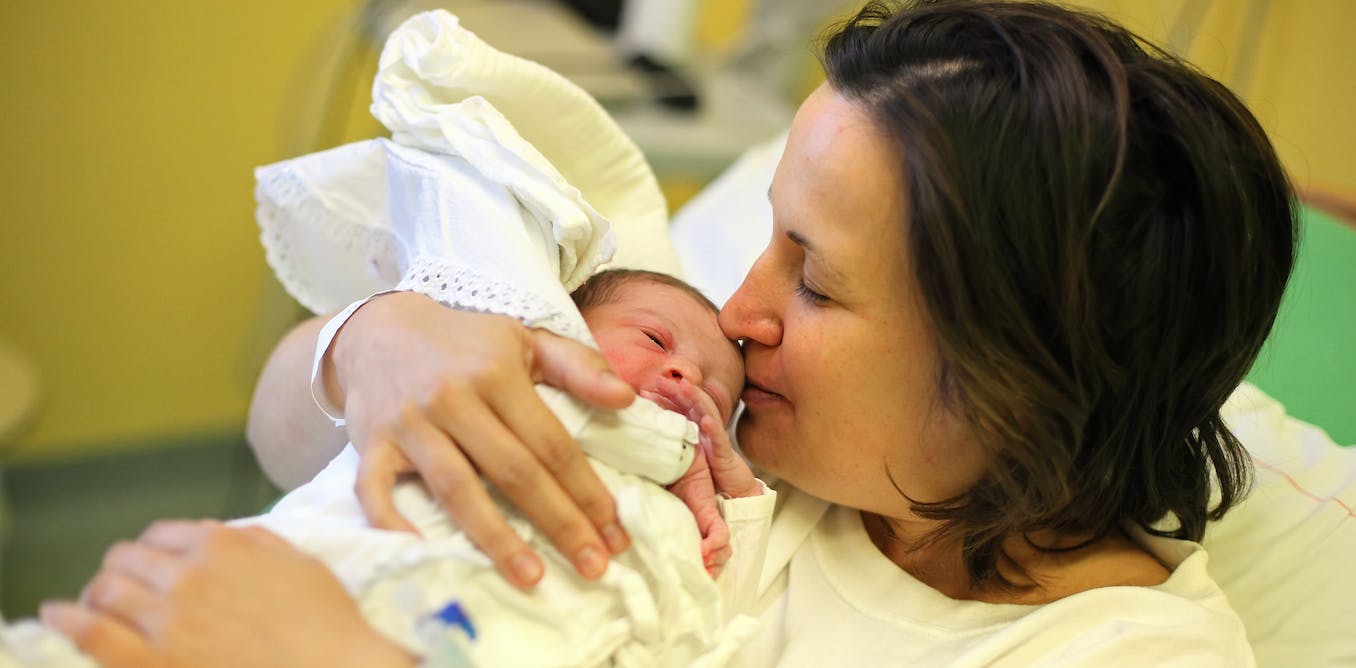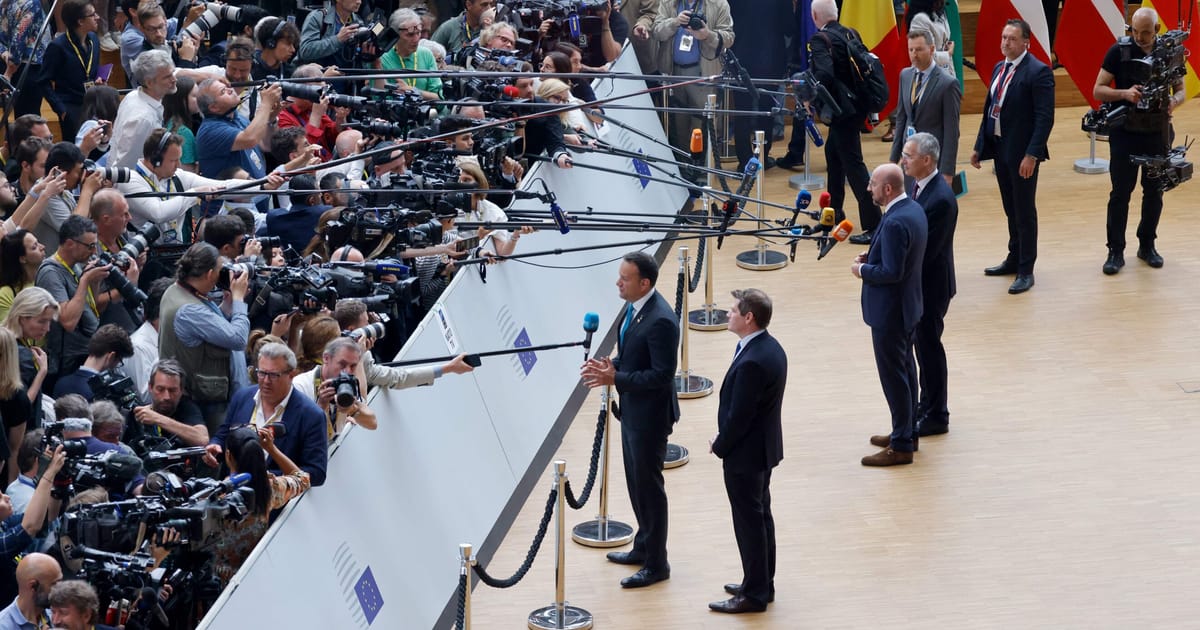US President Dwight D Eisenhower’s ‘Atoms for Peace’ speech in 1953 helped found the IAEA, and since then, his vision “has become an important, active part of our contribution towards international peace and security and furthering sustainable development,” IAEA Director General Rafael Mariano Grossi told delegates at the opening of the Agency’s 67th annual General Conference today. “The IAEA is the operational instrument of this noble cause.”
Mr Grossi, who has been reappointed for a second four-year term as Director General beginning December 2023, reflected on the work of the Agency since he assumed office four years ago and the events – the global pandemic and war in Europe – that have made “it more difficult – and urgent – to tackle the ever-more-present calamity of climate change and the very serious challenges of poverty, disease, hunger and food, water and energy insecurity.” In 2022 alone, the IAEA assisted 149 countries and territories in food and agriculture, health and nutrition, and nuclear safety.
Watch the opening of the conference.
Rays of Hope: Cancer care for all
Director General Grossi brought attention to the global cancer crisis, which “has gone under the radar for far too long,” he said. Last year, he launched Rays of Hope, in Addis Ababa on the margins of the African Union Summit, with the support of African heads of states and the World Health Organization (WHO), to assist countries seeking the tools and knowledge to address the cancer care gap in low-and-middle-income countries. Over 70 per cent of Africans do not have access to radiotherapy, and more than 20 African countries do not have a radiotherapy machine.
Since Rays of Hope was launched, donor countries have committed more than €42 million, and 67 countries have requested assistance to strengthen their capacities in the fight against cancer. In July, with Rays of Hope, Botswana opened its first radiotherapy centre for the public. “We have started with seven African countries, and we are moving on. In the coming months, Rays of Hope will begin to apply funds for activities in Latin American and Caribbean states,” Mr Grossi said.
Zoonotic Disease Integrated Action (ZODIAC)
In response to COVID-19, the IAEA’s ZODIAC initiative, which works with the WHO, the Food and Agriculture Organization of the United Nations (FAO), and the World Organisation for Animal Health (WOAH), is strengthening countries’ preparedness and ability to quickly respond to zoonotic diseases. COVID-19 reminded us of the urgency to apply nuclear techniques in order to mitigate such crisis, Mr Grossi said.
Through ZODIAC, participants from more than 95 countries have received training, and laboratories in 41 countries have been provided with equipment for serology and molecular diagnostic or genetic sequencing. With almost 130 ZODIAC National Laboratories, the IAEA VETLAB network comprises one of the largest networks of veterinary laboratories across the globe.
NUTEC Plastics
Turning to the environment, Mr Grossi highlighted the role of nuclear techniques and applications to address plastic pollution. The IAEA’s NUTEC Plastics initiative is assisting countries in Latin America and the Asia-Pacific region to use radiation recycling technology to convert plastic waste into high-quality products, and in Africa, countries are participating in a regional technical cooperation project to accelerate the transition to a circular plastic economy by applying nuclear science and technology solutions.
Additionally, on the topic of microplastics, Mr Grossi said that scientists at the IAEA Marine Environment Laboratories in Monaco “are honing powerful and accurate nuclear scientific tools to better understand the impact of such nanomaterials along the marine food chain and all the way to our dinner plates.”
Nuclear energy and climate change
On the topic of the climate crisis, Director General Grossi emphasized the role of nuclear power to mitigate climate change and how more countries are expressing interest in nuclear energy, particularly through new avenues, like small modular reactors. “Nuclear energy is safer than it has ever been, and it is safer than almost any other source of energy,” he added, citing research that puts nuclear energy at about the level of wind and solar when measured in fatalities per unit of energy produced.
Across 31 countries, there are 410 nuclear power reactors in operation totalling more than 368 000 MW(e) in installed capacity, which equates to 10 per cent of the world’s total electricity and one quarter of its low carbon supply. The Scientific Forum on Nuclear Innovations for Net Zero, 26–27 September, will highlight the innovations taking place in advancing nuclear energy’s development and its current and future contributions to avoiding greenhouse gas emissions.
“Further down the line, nuclear fusion promises the possibility of abundant energy,” Mr Grossi said. “Four years ago, IAEA activities on fusion were exclusively focused on science. Today, we have expanded our efforts, aiming also to accelerate development and deployment of fusion energy systems.” Next month, the IAEA will release the IAEA World Fusion Outlook at the 29th International Fusion Energy Conference.
Fukushima Daiichi ALPS-treated water release
Last month, Tokyo Electric Power Company (TEPCO) began the release of ALPS-treated water into the sea from the Fukushima Daiichi Nuclear Power Station. “The IAEA is performing an independent monitoring, sampling and evaluation of the situation there,” Mr Grossi stated, “And we will continue, as I said, until the last drop for decades to come.”
Nuclear safety and security in Ukraine
Nuclear safety and security in Ukraine remain top priorities for the IAEA. The IAEA has established a continued presence since last year at the Zaporizhzhya Nuclear Power Plant (ZNPP) in order to monitor compliance with the five principles for protecting the plant from a serious accident. The IAEA’s presence continues there; “we are not going anywhere,” Mr Grossi said.
In addition to ZNPP, the IAEA is present at Ukraine’s other nuclear power plants – Khmelnitsky, Rivne and South Ukraine – and the Chornobyl site. As of the end of August, the IAEA has completed 53 rotation missions in Ukraine.
Safeguards and nuclear non-proliferation
Since Mr Grossi became Director General in 2019, the number of States with safeguards agreements in force increased from 184 to 190 States; and those with Additional Protocols increased from 136 to 141. “I have been committed to strengthening the legal framework on which the continued verification of the peaceful use of nuclear material relies,” he said.
In relation to the Non-Proliferation Treaty Safeguards Agreement with the Islamic Republic of Iran, Mr Grossi reiterated that significant safeguards issues remain outstanding and “implementing the activities set out in the most recent Joint Statement between myself and Iran, in March this year, has not made the progress I was hoping for. On this, and on matters related to the de-facto suspended implementation of the JCPOA (Joint Comprehensive Plan of Action), the IAEA and I personally remain actively engaged and ready to work with Iran.”
The IAEA also continues to monitor the Democratic People’s Republic of Korea’s (DPRK) nuclear programme. “We have observed activities at several sites consistent with the DPRK’s continuation of its illegal nuclear program, which is in clear violation of relevant UN Security Council resolutions,” Mr Grossi said. “We will continue updating and hoping to engage again with the DPRK.”
Striving for gender equality in the nuclear field
The IAEA is committed to gender equality and to supporting the ability of all individuals, regardless of gender, to equally contribute to and benefit from its programmes and activities. Since the 2020 launch of the IAEA’s Marie Sklodowska-Curie Fellowship Programme (MSCFP), more than 500 women have been offered scholarships for master’s degree in nuclear-related fields. Earlier this year, the Lise Meitner Programme was launched to “level the playing field by giving women already in the nuclear field opportunities that will support their advancement,” Mr Grossi said.
Furthermore, “maximizing the IAEA talent pool and creating the conditions for gender equality are important priorities,” he said. At the start of Mr Grossi’s tenure, 30 per cent of the IAEA’s staff serving in the professional or higher category were women. He set a goal for gender parity by 2025 and put in place policies to achieve that goal. As of August 2023, the overall representation of women has reached 43 per cent.
Mr Grossi concluded his remarks, expressing gratitude to Austria, the IAEA’s host country, “for doing everything possible to enable our work.” He also thanked Monaco for hosting the IAEA Marine Environment Laboratories.
Seventy years after Eisenhower’s speech, “the dream of Atoms for Peace, now Atoms for Peace and Development, lives on,” Mr Grossi said. “Making it a reality is up to all of us.”
The week ahead
The week-long General Conference is the largest annual meeting of the Agency’s 177 Member States. Many countries are represented at the ministerial level, and more than 2800 people are registered to attend the Conference throughout the week.
General Conference sessions in the Plenary Hall, including the statements of officials and delegates, will be livestreamed. Throughout the week, the IAEA and its Member States will host more than 100 side events, highlighting different aspects of nuclear science and technology and the IAEA’s work, from initiatives related to health and nuclear energy to supporting the next generation of nuclear professionals.
Distributed by APO Group




